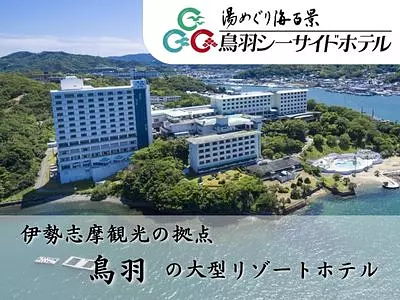Enjoy a leisurely boat trip along the world heritage site “Kumano River”. Experience the “three-tan sail” moving with the river breeze! ~Kumano River Experience School~
掲載日:2021.03.24
The Kumano River Basin is where the lifestyle culture of the people who lived along the mountains and rivers that developed along the Kumano Kodo Trail is still preserved. The Kumano River, which is registered as a World Heritage Site as a "river pilgrimage route," is a river with a long history. This time, we went to Kumano River Experience School, which is located along this river and continues to make riverboats and convey their charm! Feel like the retired emperors of the Heian and Kamakura periods as you cruise the leisurely flowing Kumano River. The boat trip while feeling the history was a bit different.
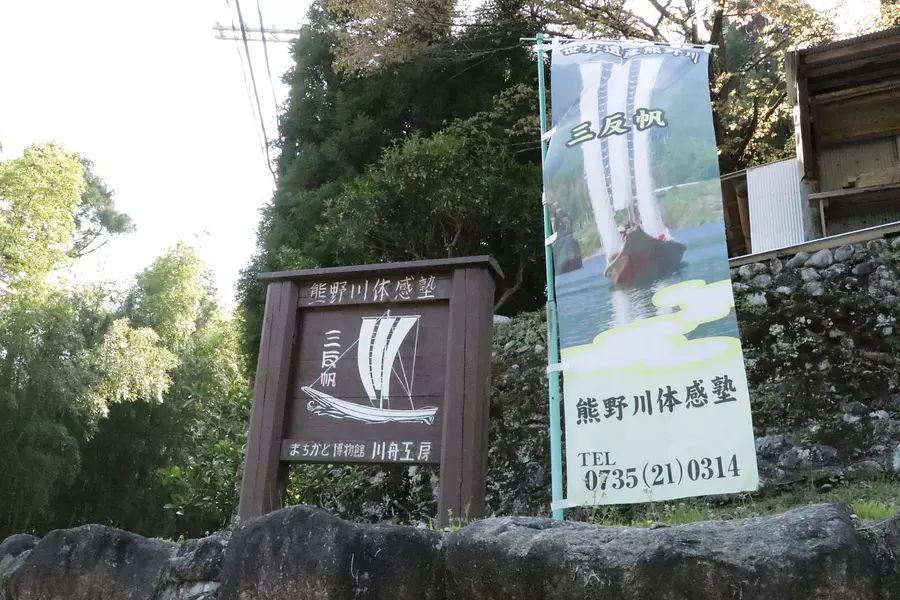
I came to "Kumano River Experience School" located along the majestic Kumano River!
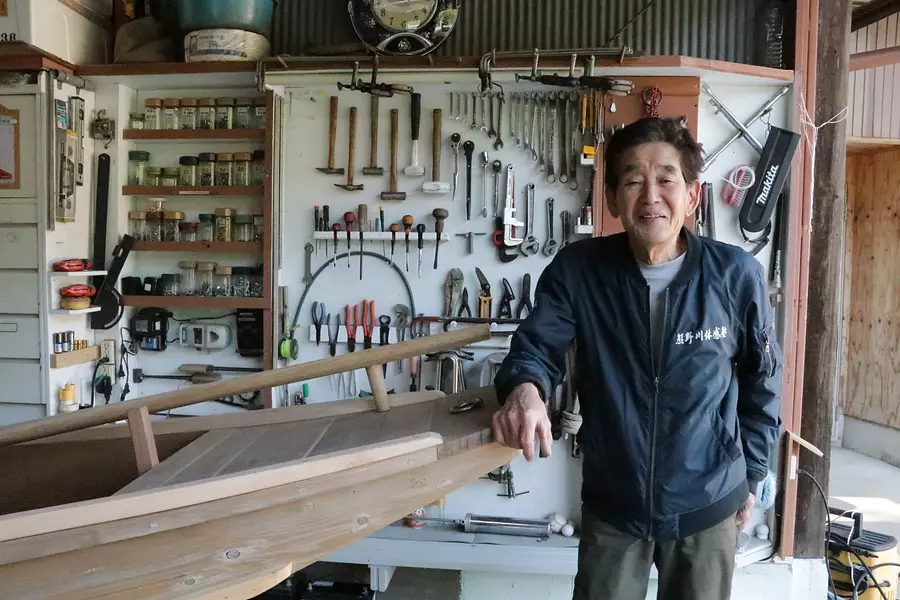
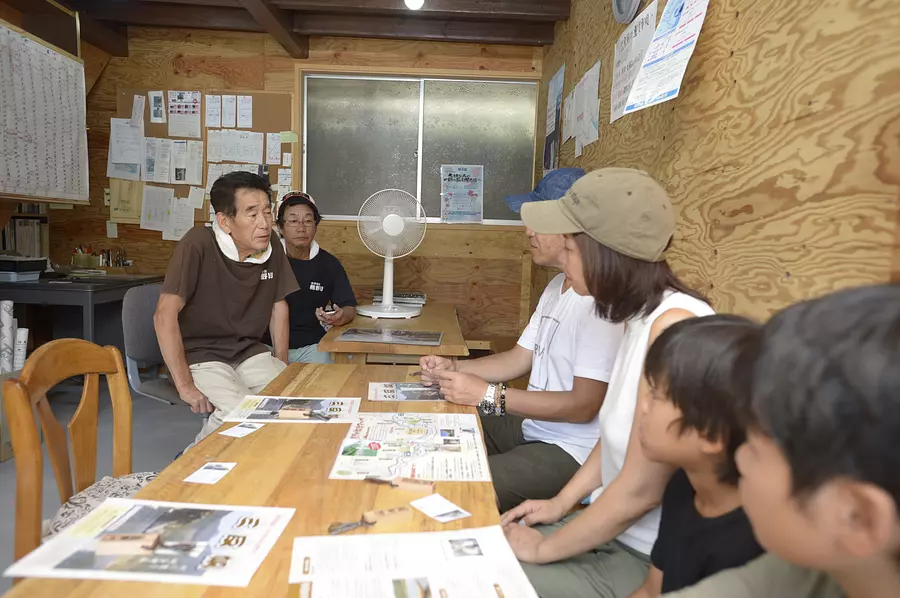
With these questions and expectations in mind, I went to experience it.
At the beginning of the experience, we were shown valuable photos from that time and taught about the history of the Kumano River.
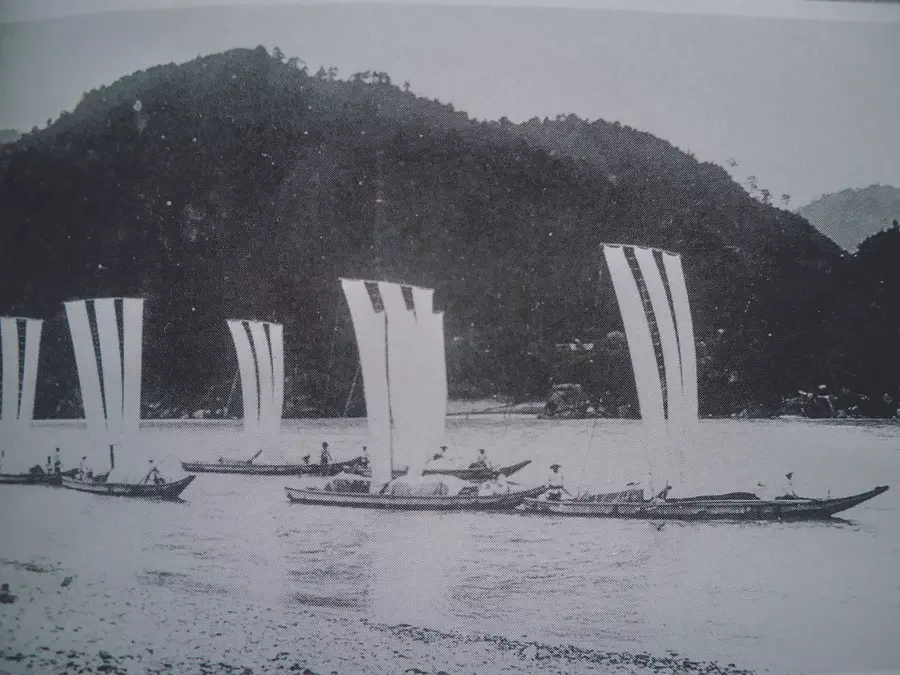
Until the mid-1950s, every family owned a boat, and it was the main source of transportation for people, transporting daily necessities, transporting people, and fishing on river roads, and even in the days when many riverboats came and went. Apparently there was.
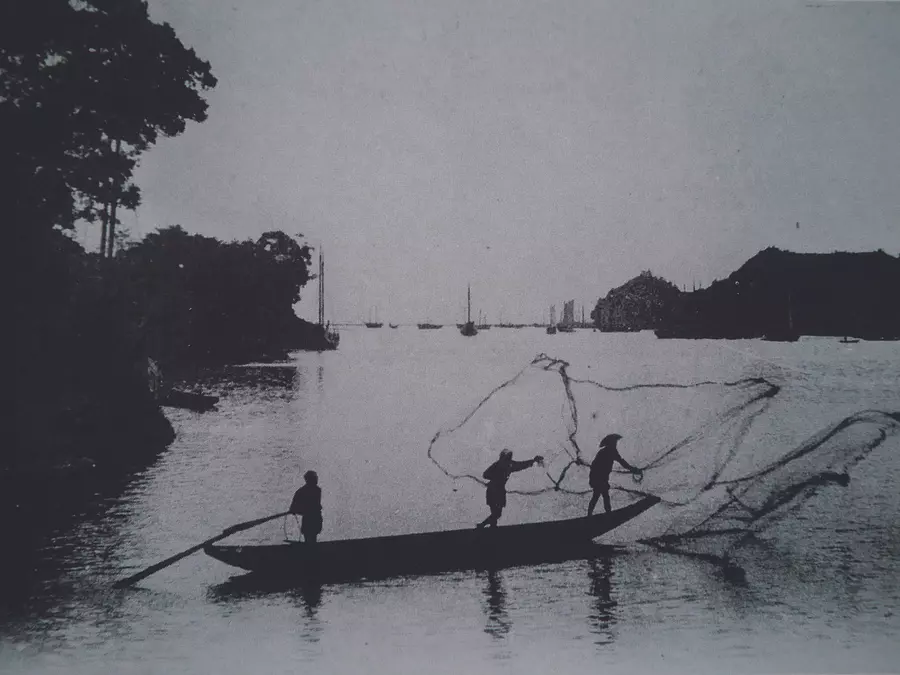
Because of this history, the Kumano River was the first in the world to be registered as a World Heritage Site as a "river pilgrimage route."
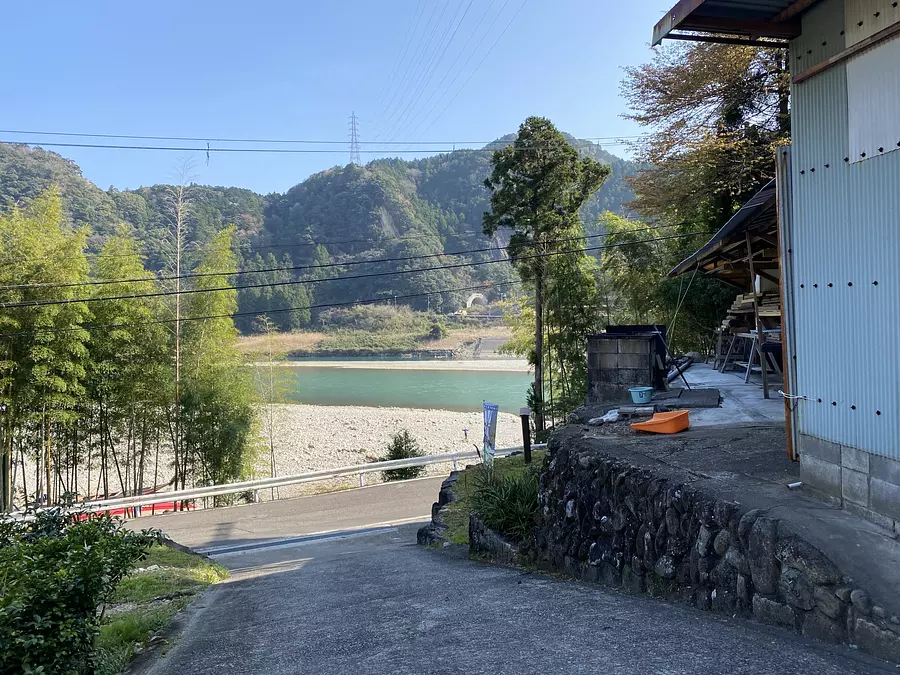
The Kumanogawa River, which is right in front of the Kumanogawa Experience School, is about a 1-minute walk away.
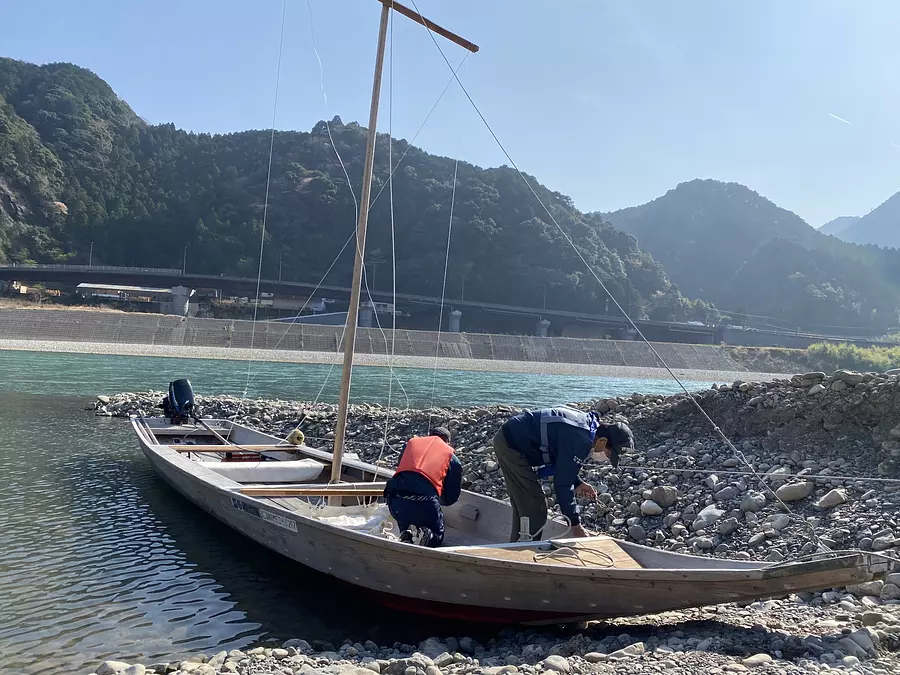
It is large enough to accommodate up to 8 people.
In order to cope with the violent currents of the Kumano River, also known as the "raging river," every aspect of the riverboat has been carefully thought out, from its overall shape and cross-section to the indentations in the bottom and materials such as boards and nails. It has a sophisticated structure that can meet the conditions of.
There are four types of wood used for riverboats: cedar, cypress, zelkova, and oak. All of the wood is sourced from forests in the Kumano River basin, and each tree is used according to its characteristics. These boats are made by inheriting the wisdom of people of the past.
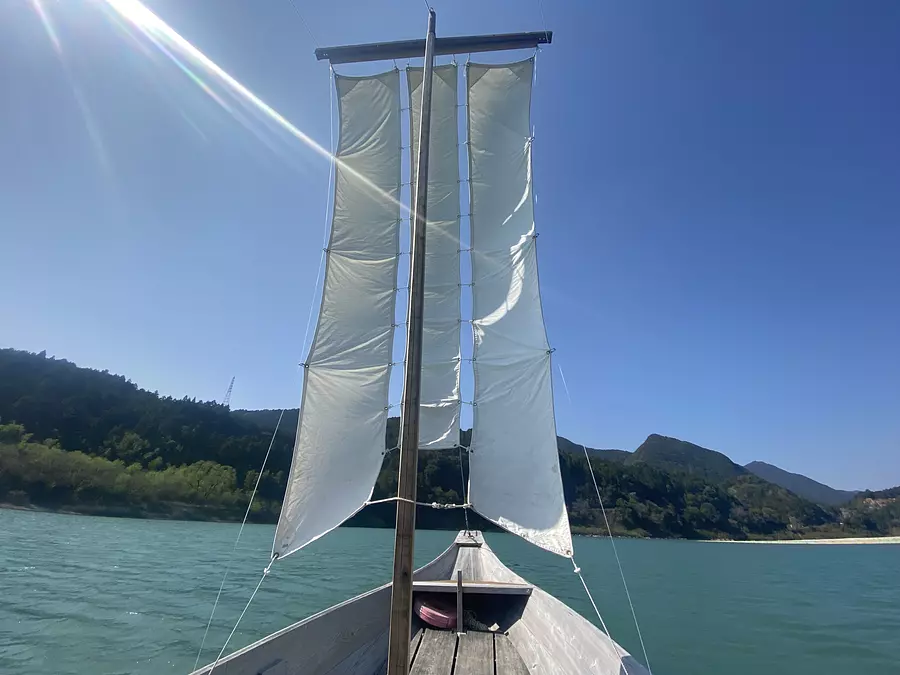
``Santanho'' is a boat that makes good use of the unique winds of the Kumano River, and as its name suggests, it is a boat that can carry three sails on its mast and move by catching the wind.
When the wind started blowing, the three canvases were finally hoisted onto the poles!
Catch the wind and make bread! The sails are stretched.
The ship moves forward as if being pushed by the wind and slipping.
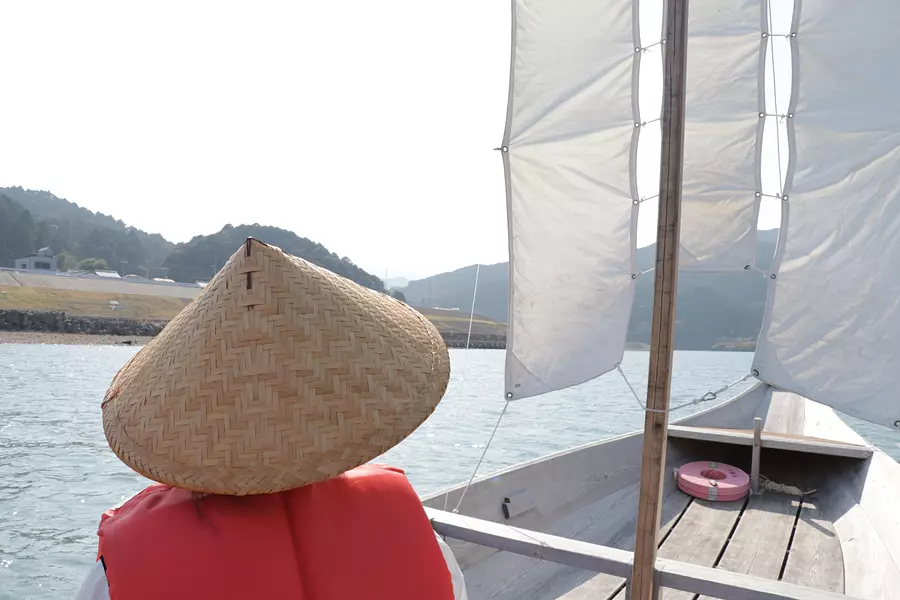
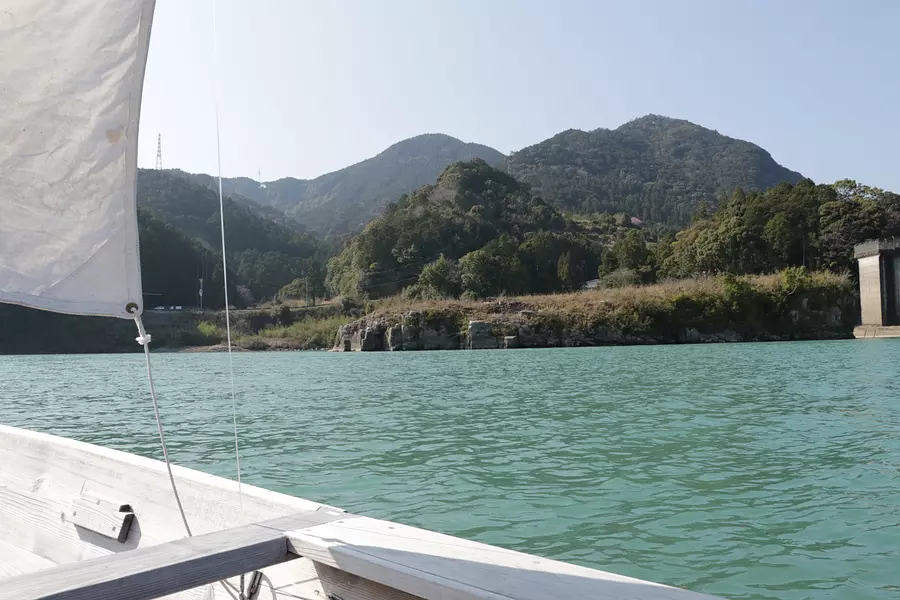
Then, this island that appeared before my eyes was the World Heritage Site "Mifunejima".
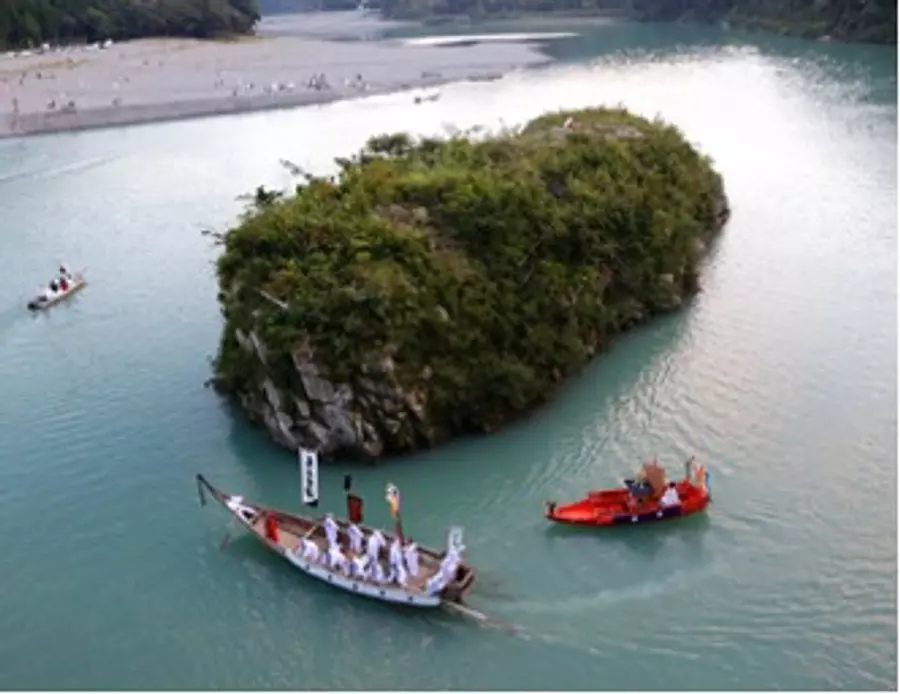
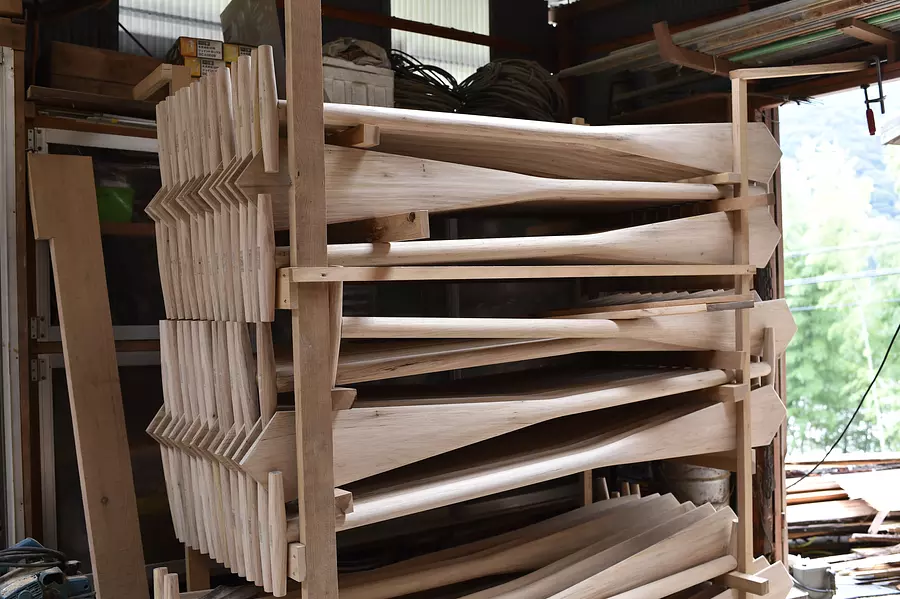
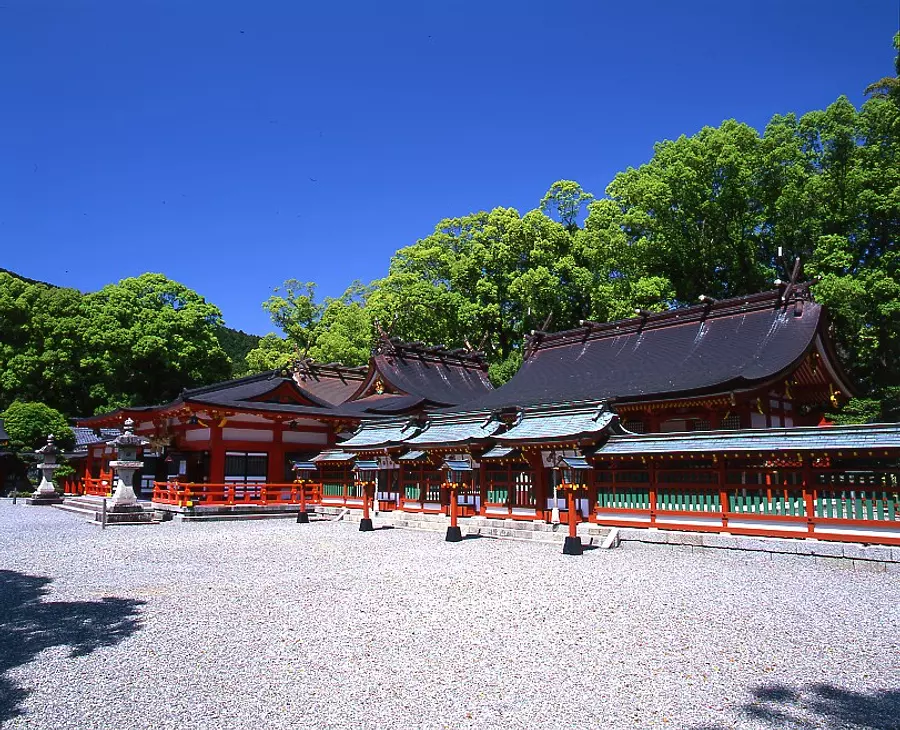
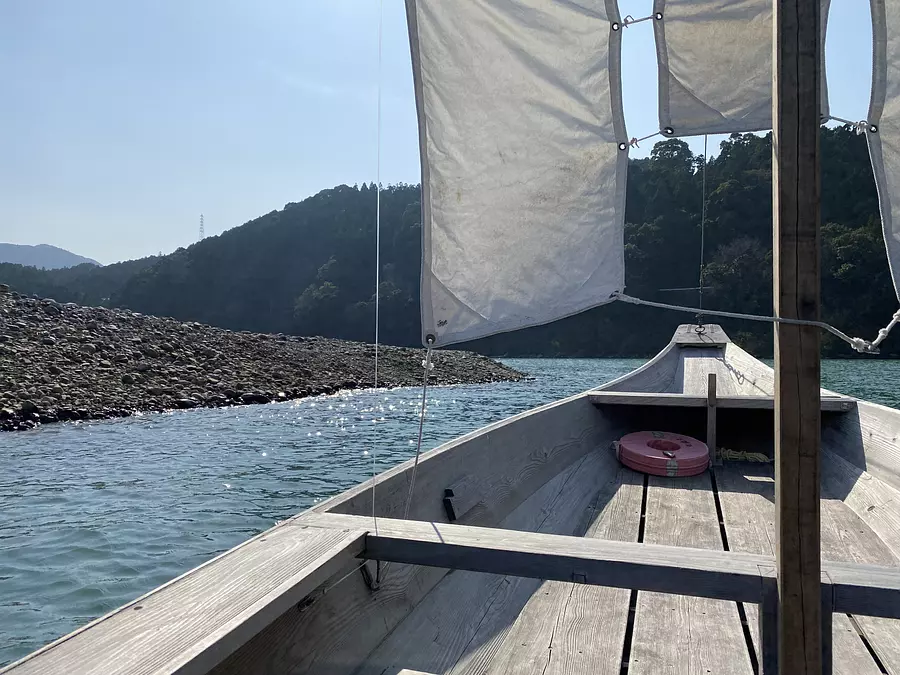
Mr. Tanigami, for some reason, was barely making his way to the riverbed, unlike when he was heading there.
``With this wind, it's faster to just stay on the edge of the riverbank,'' he said, and I realized that he was steering the ship perfectly while reading the wind.
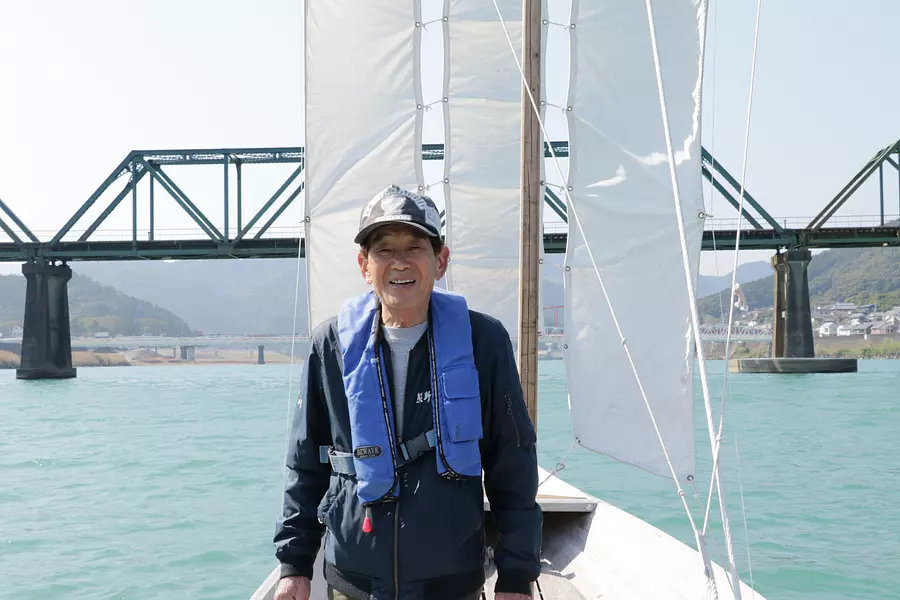
``A lot of children come to play, especially in the summer.When I tell them about how I used to play in the river when I was little, they listen with great interest,'' says Tanigami.
It taught me the wonders of living in contact with nature, something that we tend to forget in this day and age.
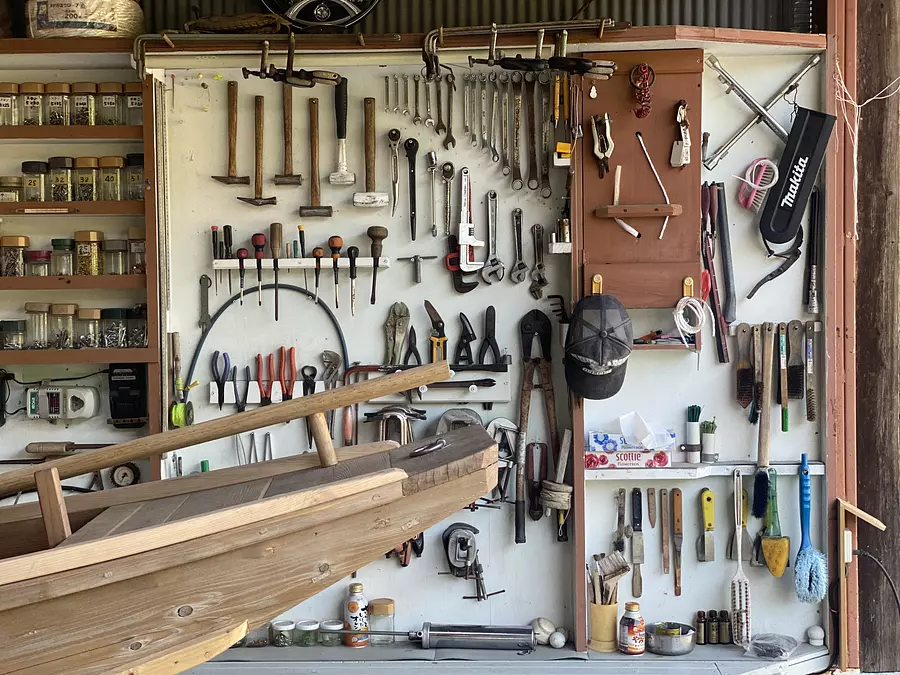
The many well-organized tools convey Mr. Tanigami's temperament as a boat craftsman.
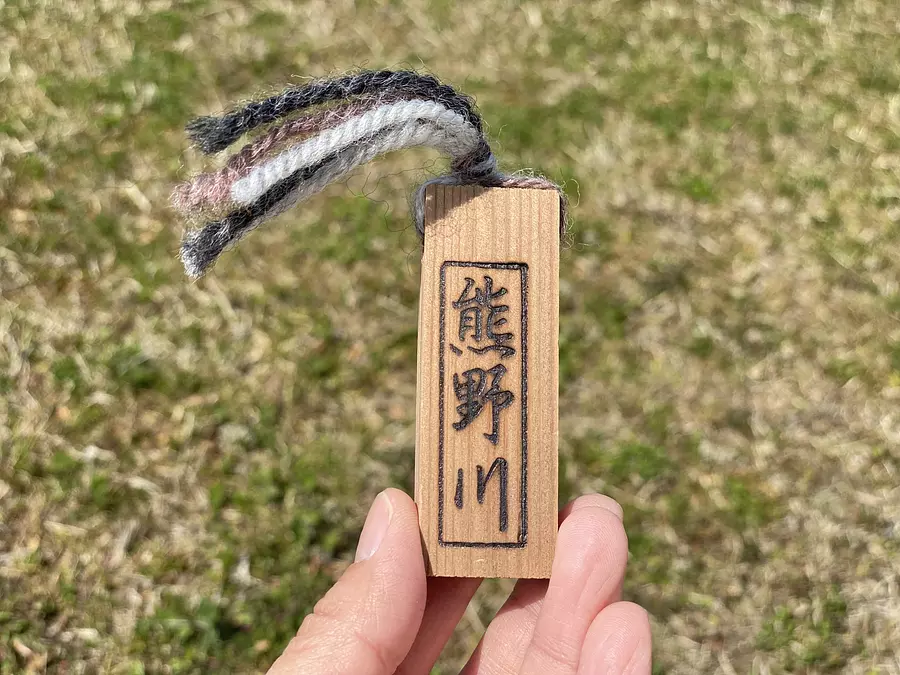
This tag is made from the same material as the ship, making it a great souvenir of your trip!
The most memorable thing about the Kumano River Experience Tour is the magnificent scenery of the Kumano River, a World Heritage Site.
We hope you will enjoy the time you spend reminiscing about our eternal history in the midst of nature!
As for corona countermeasures, thoroughly disinfect your hands.
In order to avoid crowding, we are operating with a reduced number of people allowed on each boat.
Kumanogawa Experience School
0735-21-0314
Experience fee:
9,000 yen (1 person)
4,500 yen/person (2 people)
3,500 yen/person (3 or more people)
Charter boat: 35,000 yen
9:00~17:00
All year round (reservation required)
Approximately 15 minutes by car from JR Shingu Station
Approximately 1 hour south on National Route 42 from Kisei Expressway Kumano Odomari IC
| Category | |
|---|---|
| season | |
| area |

